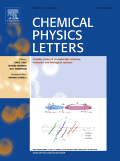
CHEMICAL PHYSICS LETTERS
Scope & Guideline
Connecting Researchers to the Pulse of Chemical Physics
Introduction
Aims and Scopes
- Computational Chemistry and Theoretical Studies:
This includes density functional theory (DFT), molecular dynamics simulations, and quantum chemical calculations to investigate a wide range of chemical systems and reactions. - Nanomaterials and Nanotechnology:
Research in this area covers the synthesis, characterization, and applications of nanomaterials, including their optical, electrical, and magnetic properties. - Photocatalysis and Photochemistry:
The journal publishes studies related to the photocatalytic degradation of pollutants, solar energy conversion, and the design of photocatalytic materials. - Surface Science and Interfaces:
Papers often explore the interactions at the interface of materials, including adsorption phenomena and surface modifications. - Organic and Inorganic Materials:
Research related to the synthesis and application of organic and inorganic compounds, particularly in the context of energy storage, sensors, and catalysis. - Spectroscopy and Analytical Chemistry:
The use of various spectroscopic techniques to analyze materials and understand their properties is a key area of focus. - Chemical Reaction Dynamics:
Studies that elucidate the mechanisms and kinetics of chemical reactions, including those involving radical species and complex reaction pathways.
Trending and Emerging
- Machine Learning and AI in Chemistry:
The integration of artificial intelligence and machine learning techniques into chemical research is on the rise, facilitating predictions of molecular behavior and properties. - Sustainable Chemistry and Green Synthesis:
There is a growing emphasis on environmentally friendly synthesis methods, including the use of renewable resources and waste materials for the preparation of catalysts and nanomaterials. - Two-Dimensional Materials:
Research on two-dimensional materials, such as graphene and transition metal dichalcogenides, is expanding, particularly in their applications for electronics and energy storage. - Electrocatalysis and Energy Conversion:
Studies focusing on electrocatalytic processes for energy conversion, including hydrogen production and CO2 reduction, are increasingly prevalent. - Photothermal and Photocatalytic Applications:
Research on materials that can efficiently harness light for catalysis or energy conversion is emerging as a critical area of interest. - Interfacial Phenomena:
Exploration of molecular interactions at surfaces and interfaces, particularly in relation to catalysis and sensor development, is gaining traction. - Quantum Computing in Chemistry:
The application of quantum computing methods for solving complex chemical problems is becoming more prominent, reflecting advancements in computational capabilities.
Declining or Waning
- Classical Thermodynamics:
Research in classical thermodynamics appears to be waning as more emphasis is placed on molecular-level studies and computational approaches that offer deeper insights. - Traditional Organic Synthesis:
While still relevant, traditional methods of organic synthesis are being overshadowed by more innovative approaches involving nanotechnology and green chemistry. - Inorganic Solid-State Chemistry:
There seems to be a decreasing trend in publications focused solely on inorganic solid-state reactions without a clear connection to applications in energy or catalysis. - Macroscopic Chemical Processes:
Studies that focus primarily on macroscopic phenomena without delving into molecular mechanisms are less common, likely due to the growing trend towards detailed mechanistic studies.
Similar Journals

Crystals
Fostering Collaboration in Multidisciplinary ResearchCrystals is a premier open-access journal, published by MDPI since 2011, that focuses on the multidisciplinary fields of chemical engineering, condensed matter physics, inorganic chemistry, and materials science. With its E-ISSN 2073-4352, the journal is headquartered in Switzerland, and actively contributes to the global scientific community by facilitating the dissemination of high-quality research. Ranking in the Q2 quartile across multiple categories, including Chemical Engineering (miscellaneous) and Materials Science (miscellaneous) for 2023, Crystals provides a platform for innovative studies that span from fundamental research to practical applications. The journal's commitment to open access ensures that groundbreaking findings are readily available to researchers, professionals, and students alike, fostering an environment of collaboration and knowledge sharing that is essential in advancing the scientific understanding of crystalline materials.

STRUCTURAL CHEMISTRY
Bridging Disciplines in Condensed Matter and ChemistrySTRUCTURAL CHEMISTRY is a premier journal published by SPRINGER/PLENUM PUBLISHERS, dedicated to advancing the study and understanding of the structural aspects of chemistry. With an ISSN of 1040-0400 and an E-ISSN of 1572-9001, this journal serves as a critical resource for researchers and professionals engaged in the fields of Condensed Matter Physics and Physical and Theoretical Chemistry. Since its inception in 1990, it has become an essential platform for disseminating high-quality research, featuring articles that explore innovative methodologies, experimental techniques, and theoretical frameworks. As evidenced by its Scopus rankings, including #192 in Condensed Matter Physics and #101 in Physical and Theoretical Chemistry, the journal occupies a respected position within the academic community, promoting interdisciplinary collaboration and insight. While it operates on a traditional subscription model, the journal continues to broaden its reach to foster knowledge exchange among scholars worldwide. With a commitment to excellence and relevance, STRUCTURAL CHEMISTRY remains a vital contributor to the scientific dialogue surrounding chemical structure and its myriad implications across various scientific disciplines.
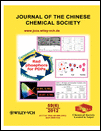
JOURNAL OF THE CHINESE CHEMICAL SOCIETY
Navigating the Landscape of Chemical AdvancementsJOURNAL OF THE CHINESE CHEMICAL SOCIETY, published by WILEY-V C H VERLAG GMBH, is a vital resource in the field of chemistry, focusing on a broad array of topics pertinent to general chemistry and its advancing sub-disciplines. Established in 1954 and running through 2024, this journal serves as a significant platform for the dissemination of high-quality research, showcasing innovative findings and developments within the chemical sciences. With its Q3 category ranking and positioning at Rank #203 in General Chemistry per Scopus, it reflects the journal's commitment to research excellence and impact. While not an open-access publication, it ensures accessibility to a global audience, making it an essential tool for researchers, professionals, and students alike seeking to stay informed and engaged in the evolving landscape of chemistry.
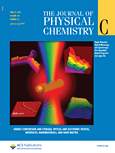
Journal of Physical Chemistry C
Elevating understanding in the realm of physical chemistry.The Journal of Physical Chemistry C, published by the American Chemical Society, stands as a pivotal resource in the realm of materials science and physical chemistry. With an impact factor reflecting its esteemed reputation, this journal showcases high-quality research spanning topics such as electronic, optical, and magnetic materials, as well as nanoscience and nanotechnology. Hailing from the United States, it operates without an open access model, yet its contributions are critical for advancing our understanding of surfaces, coatings, and films. Notably, the journal is classified in Quartile 1 (Q1) for several categories, underscoring its prominence in Physical and Theoretical Chemistry and related fields. Researchers, professionals, and students alike will find value in the comprehensive discussions and innovative research trends presented. The scholarly articles published from 2007 to 2024 not only drive forward scientific inquiry but also inform practical applications in various industries, making this journal an essential tool for anyone committed to excellence in the sciences.

Chemical Physics Impact
Exploring Innovative Solutions in Chemical Physics.Chemical Physics Impact is a prominent open-access journal published by ELSEVIER, dedicated to advancing the field of chemical physics and its related disciplines. With an ISSN of 2667-0224, this journal has rapidly carved a niche since its inception in 2020, amassing a commendable reputation reflected in its diverse category quartile rankings for 2023, including Q2 in Atomic and Molecular Physics, Condensed Matter Physics, and Electronic, Optical and Magnetic Materials. Situated in the heart of the Netherlands, the journal serves as a global platform for researchers, professionals, and students to disseminate groundbreaking findings and explore interdisciplinary approaches within scientific inquiry. The accessibility of publications underlines the journal’s commitment to fostering knowledge exchange across borders. By providing a space for high-quality research contributions, Chemical Physics Impact plays a vital role in shaping the future of chemical physics and related fields through impactful research and collaborative dialogue.

JOURNAL OF THE INDIAN CHEMICAL SOCIETY
Advancing Chemical Knowledge from India to the WorldJournal of the Indian Chemical Society, published by Elsevier, stands as a cornerstone in the field of chemistry, particularly representing the rich chemical research emanating from India.
With a significant history dating back to its establishment, this journal encompasses diverse disciplines including Drug Discovery, Electrochemistry, Inorganic Chemistry, Organic Chemistry, and Physical and Theoretical Chemistry, reflecting the evolving landscape of chemical sciences.
Despite being positioned in the Q3 category across multiple quarters, the journal demonstrates promising rankings in various chemistries, highlighting its commitment to advancing the knowledge and application of chemical sciences. While currently not available as an open access journal, the Journal of the Indian Chemical Society is dedicated to providing a platform for high-quality research that fosters innovation and collaboration among researchers, professionals, and students worldwide.
With its continuous publication from 1973 to the present, it serves as an essential repository for cutting-edge findings and developments in chemistry, striving to connect academia with industry and practice.
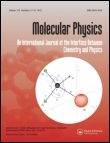
MOLECULAR PHYSICS
Shedding light on the complexities of molecular systems.MOLECULAR PHYSICS, published by Taylor & Francis Ltd, is a distinguished international journal that has been advancing the fields of biophysics, condensed matter physics, molecular biology, and physical and theoretical chemistry since its inception in 1958. With an ISSN of 0026-8976 and an E-ISSN of 1362-3028, the journal provides a rich platform for the dissemination of high-quality research, evidenced by its Q3 ranking in several domains including both biophysics and condensed matter physics as of 2023. Although the journal operates on a traditional subscription model rather than an Open Access basis, its rigorous selection process ensures the publication of relevant and impactful articles. The journal's continued convergence of research until 2024 underlines its ongoing significance and adaptability in an ever-evolving scientific landscape. For researchers, professionals, and students alike, MOLECULAR PHYSICS serves as an essential resource for keeping abreast of the latest developments, fostering collaboration, and inspiring future advancements in molecular theory and applications.

PROGRESS IN REACTION KINETICS AND MECHANISM
Pioneering Research in Physical ChemistryProgress in Reaction Kinetics and Mechanism is a distinguished academic journal published by SAGE Publications Ltd, focusing on the intricate dynamics of reaction kinetics and mechanisms within the field of Physical and Theoretical Chemistry. With an ISSN of 1468-6783 and an E-ISSN of 1471-406X, this journal serves as a critical platform for researchers and practitioners seeking to explore and disseminate cutting-edge findings from 1999 to 2024. Although currently not categorized as Open Access, the journal maintains a competitive profile with a Q4 categorization in its field, showcasing its commitment to fostering scientific dialogue and inquiry. The journal ranks #140 out of 189 in its category, reflecting its integral role in advancing knowledge and understanding in chemistry. Scholars, professionals, and students who aim to stay at the forefront of research in reaction kinetics will find valuable insights and findings in this esteemed publication.
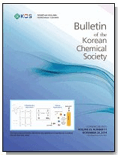
BULLETIN OF THE KOREAN CHEMICAL SOCIETY
Connecting researchers to the pulse of chemical discovery.BULLETIN OF THE KOREAN CHEMICAL SOCIETY, published by WILEY-V C H VERLAG GMBH, is a prominent journal in the field of chemistry, with a specific emphasis on miscellaneous chemical research. With an ISSN of 0253-2964 and E-ISSN 1229-5949, this journal serves as a pivotal platform for researchers, professionals, and students who are eager to showcase innovative studies that address both foundational and emerging topics in the discipline. Boasting a commendable Q2 ranking in the 2023 chemistry quartiles, the journal ranks within the top 50th percentile in Scopus, reflecting its commitment to high-quality scientific discourse. The content published within its pages from 1996 to 2024 covers a vast array of subjects, ensuring a multidisciplinary approach to chemical research. The journal’s impact in the academic community is underscored by its accessibility to a global audience, making it an essential resource for those wishing to stay at the forefront of chemical advancements.

JETP LETTERS
Connecting Ideas, Transforming KnowledgeJETP LETTERS, published by MAIK NAUKA/INTERPERIODICA/SPRINGER, is a prestigious journal in the field of physics and astronomy, which plays a pivotal role in disseminating groundbreaking research and innovative ideas since its inception in 1969. With an ISSN of 0021-3640 and an E-ISSN of 1090-6487, this journal aligns well with the interests of both seasoned researchers and emerging scholars, having achieved a 2023 category rank of Q3 for miscellaneous topics within physics and astronomy. Located in the United States at 233 SPRING ST, NEW YORK, NY 10013-1578, JETP LETTERS serves as a critical resource for its readership, offering exclusive insights and advancements across diverse areas of physics. While not open access, it hosts a collection of articles that refine theoretical approaches and experimental methods, providing both knowledge and inspiration to professionals and academics seeking to make impactful contributions to the scientific community. The journal’s quality is reflected in its Scopus ranking, where it stands at 39 out of 81 in the multidisciplinary category, placing it in the 52nd percentile, thus underscoring its significance and reliability as a scholarly outlet.